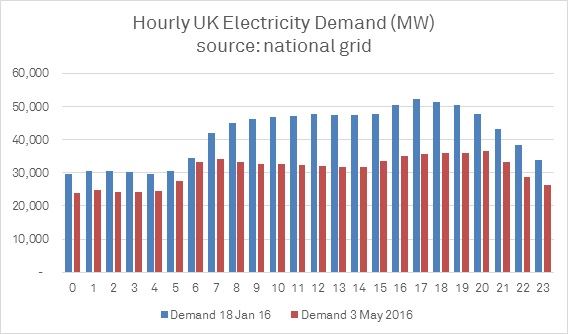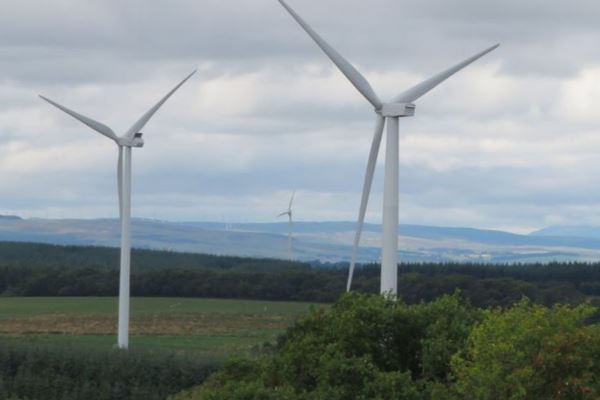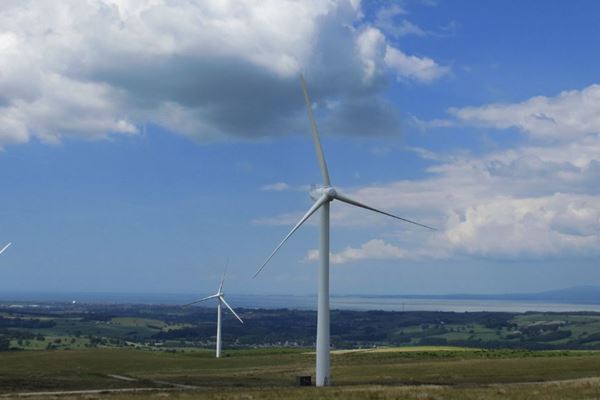We’ve seen the proportion of renewables' contribution to the grid growing from 1.3% to 25% over the past decade, and globally, 53% of new energy capacity constructed in 2015 was renewable energy, now delivering 10% of global electricity needs .
Despite this significant contribution, renewables are often criticised for being ‘intermittent’ as they don’t generate 24/7/365. Whilst renewable generation is reliant on natural resources (wind, sunlight, rainfall) I prefer to use the term variability - a more appropriate description as solar, wind and hydro output can be forecast accurately, providing the National Grid advance notice of how much will be generated by each wind, solar and hydro project. However, the lowest cost renewable energy sources are not able to provide the shape required to meet the significant swings in daily electricity demand, so flexible generation power stations are necessary as part of a transitional energy system.

The market dictates that it is the most expensive and polluting generators (often, diesel or oil fired and less efficient coal and gas) which are responsible for meeting peaks of demand which occur daily between four and seven in the evening. Therefore the onus falls on us, the consumers, to step up and address the shape of our energy demand to both reduce the use of the most carbon intensive generators, to allow increased contribution of renewables and to reduce the cost of energy to consumers.
SHAPING ENERGY DEMAND
There are three approaches that can be taken to tackle the shape of energy demand. Firstly, we can take it upon ourselves, as individuals and businesses, to reduce demand and use energy more consciously and efficiently. Another option would be for the energy companies to better match the shape of demand and supply to order to avoid the expensive and GHG emission intensive spikes. Renewables could also be the answer – by looking into ways to store electricity generated by renewable sources, we could develop ways to allow surplus in off peak generation to contribute to dealing with peak demand.
It’s time to look at both sides of this equation. At Thrive Renewables, we characterise these measures as the enabling environment, where not only electricity supply, but also demand will evolve to better utilise natural resources. This would see us build a system where renewables can contribute over 50 per cent of power to the grid, reserving use of precious fossil fuels for times they are needed the most. In other words, this system would maximise the utilisation of energy which is freely and infinitely available and minimise the consumption of finite and harmful resources.
ENABLING ENVIRONMENT IN PRACTICE
To implement this, we need to all take active steps to shape energy demand. At home, work and recreation we can think about when we use power. Do we need to operate our most energy intensive appliances (immersion heaters, tumble dryers, washing machines) at peak demand periods, or can we set them to run at periods of lower demand, lowering the peak and smoothing demand? We are already seeing industrial consumers managing their consumption to take the pressure off of the grid at peak times. We’d hope that in time domestic appliances will be manufactured which are sensitive to peak demand, which automatically reduce their energy requirements when the network is stretched. In the mean time we can consider energy efficiency measures, where we can contribute to lowering the overall demand of energy.
On a larger scale, there are industry level changes that can be made. At Thrive, we’re looking at ways to integrate storage into our renewable generation projects, where we store a proportion of the power generated, then release the stored electricity to the grid when demand peaks. This is a development in progress as storage options are growing and feasibility is on the horizon.
We’re also exploring demand side management tools, where industry and larger consumers of energy automatically trim their demand for power when peaks are forecast, taking the stress out of the grid and reducing the use of the most expensive and polluting sources of power. Office buildings would not notice if the air conditioning or heating was switched off for ½ an hour to reduce a spike in demand, yet the aggregate impact of consumption dipping takes the top of the peak, requiring less fossil fuel to be burnt.
SHARED RESPONSIBILITY FOR ENERGY
The energy system will have to change from a demand-led, centralised system to one where we all take responsibility. In addition to us being mindful about energy use there is also the possibility of domestic and commercial systems and appliances which can respond to the availability (or lack of availability) of power becoming mainstream.
Electric vehicles, for example, can be charged using renewable sources and discharged not only for travel, but can also be plugged into homes and offices releasing power back to contribute to satisfying peak demand. Many of us already have an energy storage device in our homes, our hot water tank, which can play a role in balancing the system. Additionally, domestic appliances will be able to tweak demand for heat, refrigeration, cooling and motors, which in aggregate across the country can have a material impact on the shape of consumption, allowing renewable resources utilised to a greater extent. This will consciously (albeit automatically) shift both demand and supply to a shape which better matches our daily lives and natural resource availability.
THE FUTURE OF ENERGY DEMAND
The role for renewable generation is growing, and the establishment of the enabling environment will throw the door wide open to a cleaner, more sustainable system, where we can all play our part. Let’s start by being conscious of when we use energy, is it day or night, sunny or cloudy, windy or still?
If we get this right, we can reduce and sculpt demand to provide the flexibility in the system, allowing the majority of power to be generated from infinite resources, rather than the current system which depends on finite resources and environmentally damaging technologies to achieve the flexibility. By better matching demand and supply we can reduce both the environmental and financial cost of electricity.



